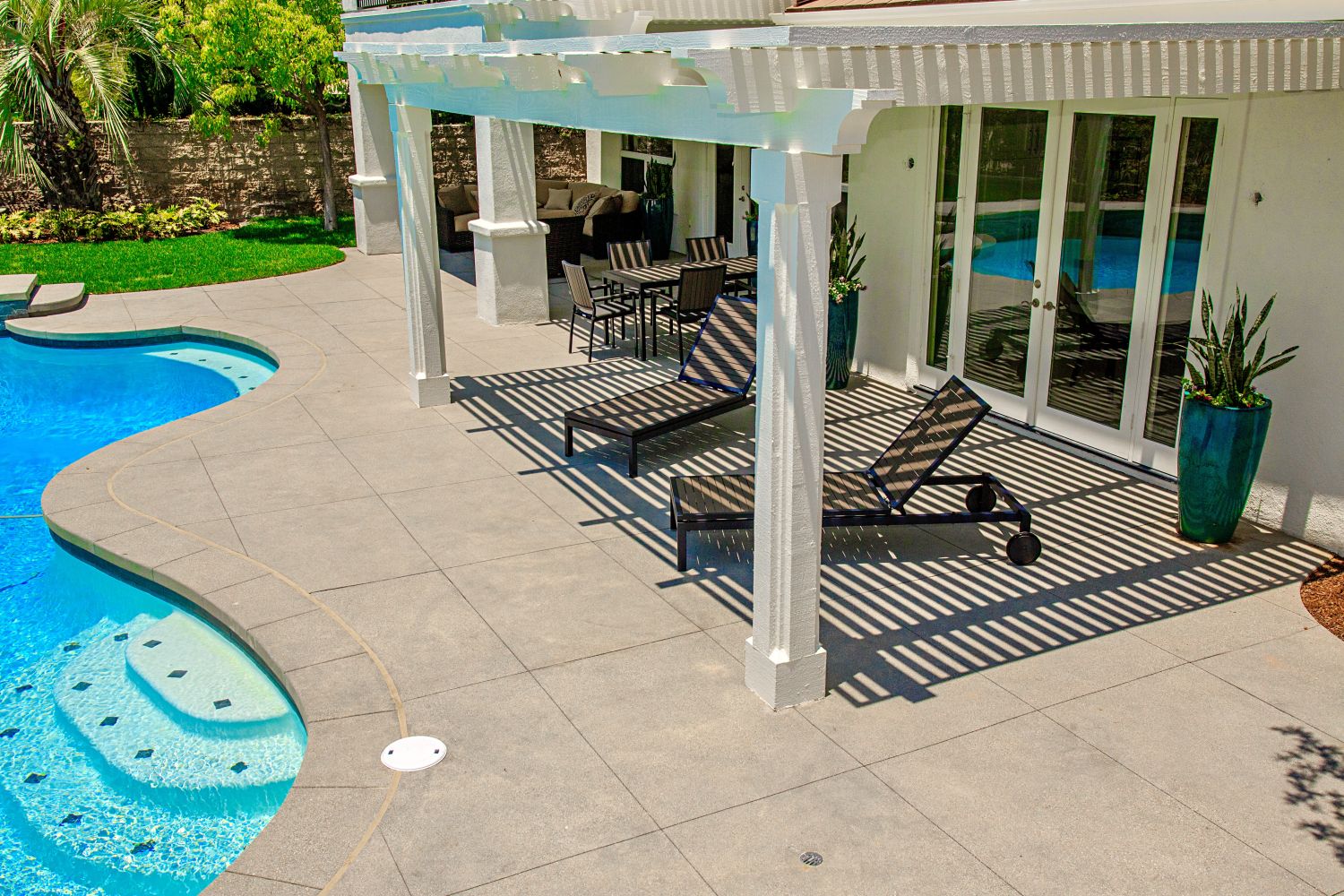
A pergola, often serving as a stylish yard canopy, transforms an ordinary backyard into a tranquil outdoor retreat. It can enhance both the functional and aesthetic appeal of your outdoor space, making it a cosy area for relaxation or social gatherings. Careful planning is essential when embarking on the construction of a pergola. It ensures the structure not only meets your aesthetic and functional needs but also complies with local regulations to avoid legal issues.
In this blog, we explore every aspect of pergola planning and construction—from the initial blueprint to the final touches and maintenance.
The first step in planning is determining the available space and the ideal location for your pergola. Consider factors such as sun exposure and how the pergola will blend with existing structures and landscaping to maintain aesthetic coherence.
It's crucial to understand and comply with local building codes and regulations. In many regions, small pergolas may not require a permit if they fall below certain size thresholds, typically around 100 square feet in area and below a specific height, like 10 feet. However, it’s always wise to check with your local building authority as these regulations can vary significantly by location.
Collaborate with a designer or an architect to create a detailed blueprint of your pergola. This plan should include precise measurements, chosen materials, and specific design elements such as the shape and style of the roof and pillars. Accuracy in this stage is crucial to prevent issues during construction.
Choose designs that complement your home's existing architecture and function effectively as a yard canopy, merging beauty with utility. The materials should match the style of your house and be durable enough to withstand the outdoor environment.
Think about the primary use of the pergola—whether it will serve as a dining area, lounge space, or a support for climbing plants. Consider integrating features such as lighting, fans, or privacy screensPrivacy screens in landscaping refer to the use of plants, such as hedges, trees, or tall shrubs, to... to enhance comfort and usability. For instance, pergolas can be adapted to include various extras ranging from ceiling fans and adjustable slats to entertainment systems and fire features, making them versatile additions to any garden.
Navigating local zoning laws and property lines is crucial before starting your pergola project. These regulations are designed to maintain the aesthetic and structural integrity of neighborhoods. They determine how close structures can be to property lines and other restrictions related to heights and types of structures allowed. Familiarizing yourself with these rules ensures that your project does not run afoul of local norms, which could lead to fines or even the need to modify or dismantle structures later.
Acquiring the necessary permits is a critical legal step for pergola construction. This typically involves submitting detailed plans of your project to local authorities, who will review them to ensure compliance with zoning and building codes. The process can be intricate and sometimes lengthy, but it is essential for legal compliance and to avoid potential penalties. Engaging with professionals, such as architects or permit services, can streamline this process.
For building a pergola, you'll need various materials like wood, screws, and concreteConcrete is a composite material made from a mixture of cement, sand, gravel, and water. It is one o..., and tools such as saws, drills, and levels. It's advisable to create a comprehensive list of required materials and tools beforehand, which helps in budgeting and ensures you have everything needed when construction begins. Consider both buying and renting options for tools, depending on their cost and your future needs.
The first physical step is to clear and prepare the site. This involves removing any debris and obstacles from the area. It's essential to mark out precisely where the pergola will be erected according to the blueprint. Proper site preparation helps in aligning the structure correctly and avoids complications during construction.
The construction phase involves setting the foundation by digging holes for posts and securing them with concrete to ensure stability. Following the blueprint, attach beams and rafters, making sure they are levelA level is a tool used to determine whether a surface is horizontal (level) or vertical (plumb). It ... and securely attached. Attention to detail here is crucial for the pergola’s structural integrity and longevity.
Based on your design, you might incorporate additional elements like lighting, fans, or privacy screens. These features should be integrated during the construction phase to ensure seamless incorporation into the pergola’s structure, enhancing both functionality and aesthetic appeal.
To ensure your pergola stands the test of time, applying a weather-resistant finish is crucial. Here are some options:
Enhancing the aesthetic appeal of your pergola can transform your outdoor space into an inviting retreat. Consider these elements:
Regular maintenance is essential to keep your pergola looking its best and to extend its lifespan:
Cedar, redwood, and pressure-treated pine are popular choices. They are picked for their durability and for resisting insects and rot.
In most areas, a permit is required. Check with your local building department for specific regulations.
Regularly clean it, inspect for damage, and reapply protective finishes as needed to keep it in good condition.
Yes, but ensure the deck can support the additional weight and secure the pergola posts properly.
Pergolas enhance the aesthetic appeal of your outdoor space, provide shade, and can increase property value.
Depending on the complexity of the design and experience level, it can take from a few days to a couple of weeks.
Building a pergola with West Hills Masonry is more than just a home improvement project; it's an investment in enhancing the beauty and functionality of your outdoor living space. With our expertise in masonry and landscape construction, we ensure that every pergola project is crafted with precision and designed to meet your unique lifestyle needs. Trust West Hills Masonry to expertly craft your pergola, an elegant yard canopy that elevates both the functionality and beauty of your outdoor living space.
Are you ready to elevate your outdoor space with a stunning pergola? Visit West Hills Masonry to explore our services and start your transformation today. Contact us now to discuss your project and see how we can make your pergola dream a reality!
 Carlos Gonzales
Carlos GonzalesLocations We Serve
Schedule A Consultation